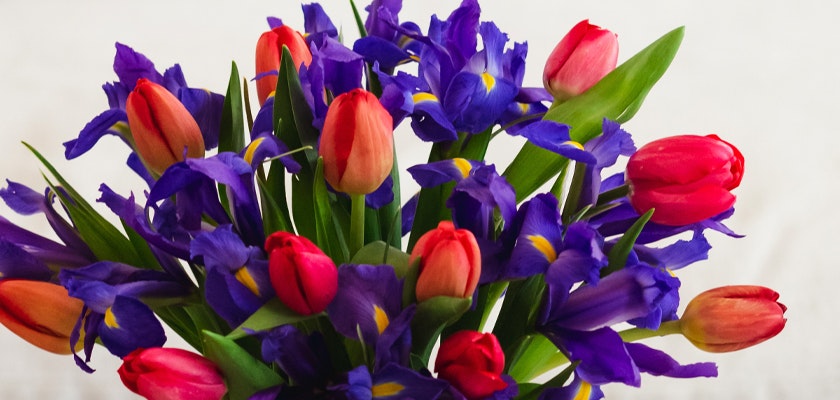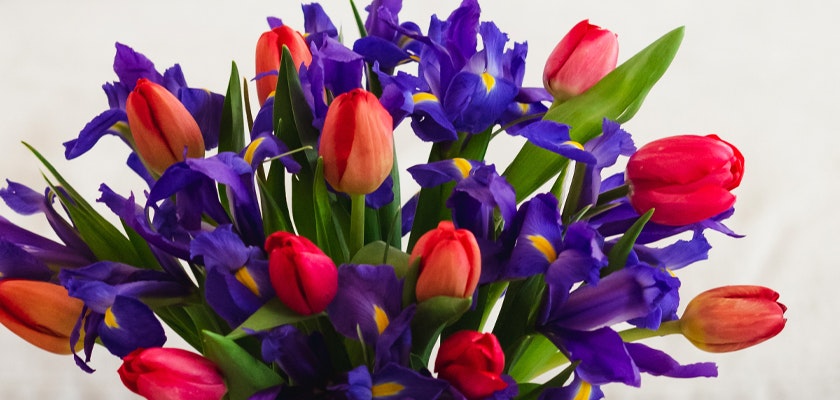Unfolding the Petals: Japanese Flowers and Their Cultural Significance
Japan, a country known for its rich culture and traditions, has a unique language of flowers called "Hanakotoba."
Uncover the symbolism of Japanese flowers and their impact on culture
This centuries-old floral code allows people to express their feelings and communicate their thoughts through the symbolic use of different flowers. Each bloom carries a specific meaning, often related to life's fleeting nature, purity, love, or even mortality. The practice of assigning meanings to flowers is an integral part of Japanese culture, and it plays a significant role in both their traditional and modern society.
Floral symbolism in Japan is deeply rooted in their customs and beliefs. The intricate connection between nature and human emotions has led to the development of this beautiful floral language. From the Sakura (cherry blossom) symbolizing the transient beauty of life to the Kiku (chrysanthemum) representing endurance and rejuvenation, each flower tells a unique tale.
Uncover the symbolism of Japanese flowers and their impact on culture
This centuries-old floral code allows people to express their feelings and communicate their thoughts through the symbolic use of different flowers. Each bloom carries a specific meaning, often related to life's fleeting nature, purity, love, or even mortality. The practice of assigning meanings to flowers is an integral part of Japanese culture, and it plays a significant role in both their traditional and modern society.
Floral symbolism in Japan is deeply rooted in their customs and beliefs. The intricate connection between nature and human emotions has led to the development of this beautiful floral language. From the Sakura (cherry blossom) symbolizing the transient beauty of life to the Kiku (chrysanthemum) representing endurance and rejuvenation, each flower tells a unique tale.
Ten Japanese Flowers and Their Unique Meanings
1. Sakura (Cherry Blossom): A Symbol of Transient Beauty
The Sakura, or cherry blossom, is perhaps the most iconic flower in Japan. It's a symbol of the transience of life, representing the brief yet beautiful nature of existence. The cherry blossom season, known as Hanami, is a time of celebration when people gather to appreciate the temporary beauty of these delicate blooms.
2. Kiku (Chrysanthemum): Embodying Endurance and Rebirth
The Kiku, or chrysanthemum, is another important flower in Japan. It represents endurance and rejuvenation, with the yellow chrysanthemum often associated with the sun. The chrysanthemum is also a symbol of royalty and nobility, featured prominently in the crest of the Japanese Imperial Family.
3. Ume (Plum Blossom): An Emblem of Hope and Patience
The Ume, or plum blossom, is a symbol of hope and patience. It's one of the first flowers to bloom at the end of winter, signifying the arrival of spring. The plum blossom is often used in art and poetry as a metaphor for overcoming challenges and looking forward to brighter days.
4. Tsubaki (Camellia): Representing Perfection and Humility
The Tsubaki, or camellia, is a symbol of perfection and humility. Its perfectly symmetrical form represents the ideal of beauty in Japan, while its unassuming nature embodies the virtue of humility. The red camellia, in particular, is often associated with love and passion.
5. Ayame (Iris): Expressing Courage and Good News
The Ayame, or iris, is a flower that represents courage and good news. Its sword-shaped leaves symbolize a warrior's spirit, making it a popular gift for individuals facing challenges or starting new ventures. The iris is also associated with good news and is often used to celebrate positive life events.
Ten Japanese Flowers and Their Unique Meanings
1. Sakura (Cherry Blossom): A Symbol of Transient Beauty
The Sakura, or cherry blossom, is perhaps the most iconic flower in Japan. It's a symbol of the transience of life, representing the brief yet beautiful nature of existence. The cherry blossom season, known as Hanami, is a time of celebration when people gather to appreciate the temporary beauty of these delicate blooms.
2. Kiku (Chrysanthemum): Embodying Endurance and Rebirth
The Kiku, or chrysanthemum, is another important flower in Japan. It represents endurance and rejuvenation, with the yellow chrysanthemum often associated with the sun. The chrysanthemum is also a symbol of royalty and nobility, featured prominently in the crest of the Japanese Imperial Family.
3. Ume (Plum Blossom): An Emblem of Hope and Patience
The Ume, or plum blossom, is a symbol of hope and patience. It's one of the first flowers to bloom at the end of winter, signifying the arrival of spring. The plum blossom is often used in art and poetry as a metaphor for overcoming challenges and looking forward to brighter days.
4. Tsubaki (Camellia): Representing Perfection and Humility
The Tsubaki, or camellia, is a symbol of perfection and humility. Its perfectly symmetrical form represents the ideal of beauty in Japan, while its unassuming nature embodies the virtue of humility. The red camellia, in particular, is often associated with love and passion.
5. Ayame (Iris): Expressing Courage and Good News
The Ayame, or iris, is a flower that represents courage and good news. Its sword-shaped leaves symbolize a warrior's spirit, making it a popular gift for individuals facing challenges or starting new ventures. The iris is also associated with good news and is often used to celebrate positive life events.
6. Hasu (Lotus): Denoting Purity and Enlightenment
The Hasu, or lotus, is a symbol of purity and enlightenment in Japan. It grows in muddy water but remains unstained, representing the ability to rise above adversity and achieve spiritual enlightenment. The lotus is a common motif in Buddhist art and is often used in religious ceremonies.
7. Himawari (Sunflower): Conveying Adoration and Longevity
The Himawari, or sunflower, represents adoration, loyalty, and longevity. Its bright yellow petals and ability to follow the sun symbolize a deep admiration for someone and a wish for their long life. Sunflowers are often given as gifts to show appreciation and to celebrate personal achievements.
8. Ran (Orchid): Symbolizing Beauty and Elegance
The Ran, or orchid, is a symbol of beauty and elegance in Japan. It's often associated with noble individuals and is considered a sign of refinement. Orchids are frequently used in Ikebana, the traditional Japanese art of flower arranging.
9. Yuri (Lily): Signifying Purity and Passion
The Yuri, or lily, represents purity and passion. Its pure white color symbolizes innocence and purity, while its intoxicating fragrance suggests a passionate nature. Lilies are often used in weddings and other celebrations to convey these sentiments.
10. Sumire (Violet): Denoting Sincerity and Love
The Sumire, or violet, is a symbol of sincerity and love. Its small size and delicate nature represent a sincere and deep affection for someone. Violets are often given as gifts to express love and admiration.
6. Hasu (Lotus): Denoting Purity and Enlightenment
The Hasu, or lotus, is a symbol of purity and enlightenment in Japan. It grows in muddy water but remains unstained, representing the ability to rise above adversity and achieve spiritual enlightenment. The lotus is a common motif in Buddhist art and is often used in religious ceremonies.
7. Himawari (Sunflower): Conveying Adoration and Longevity
The Himawari, or sunflower, represents adoration, loyalty, and longevity. Its bright yellow petals and ability to follow the sun symbolize a deep admiration for someone and a wish for their long life. Sunflowers are often given as gifts to show appreciation and to celebrate personal achievements.
8. Ran (Orchid): Symbolizing Beauty and Elegance
The Ran, or orchid, is a symbol of beauty and elegance in Japan. It's often associated with noble individuals and is considered a sign of refinement. Orchids are frequently used in Ikebana, the traditional Japanese art of flower arranging.
9. Yuri (Lily): Signifying Purity and Passion
The Yuri, or lily, represents purity and passion. Its pure white color symbolizes innocence and purity, while its intoxicating fragrance suggests a passionate nature. Lilies are often used in weddings and other celebrations to convey these sentiments.
10. Sumire (Violet): Denoting Sincerity and Love
The Sumire, or violet, is a symbol of sincerity and love. Its small size and delicate nature represent a sincere and deep affection for someone. Violets are often given as gifts to express love and admiration.
BloomsyBox: Bringing the Beauty of Japanese Flowers to Your Home
If you're intrigued by the beauty and symbolism of Japanese flowers, BloomsyBox offers a wonderful way to enjoy these blooms. BloomsyBox is a subscription service that delivers fresh, sustainably sourced bouquets right to your doorstep. Their arrangements are thoughtfully curated, featuring a variety of flowers that can help you explore the world of floral symbolism.
BloomsyBox's bouquets are not just about aesthetics; they're about creating an experience. Each box is a surprise, offering you the opportunity to discover new flowers and their meanings. The flowers are sourced directly from farms, ensuring that they are fresh and of high quality.
Moreover, BloomsyBox's bouquets are designed by professional florists who understand the language of flowers. They carefully select and arrange the flowers in each bouquet to convey specific sentiments, allowing you to experience the beauty and symbolism of flowers in a meaningful way.
Whether you wish to bring the tranquility of a Japanese garden into your home, express your feelings through the language of flowers, or simply enjoy the aesthetic appeal of a beautifully arranged bouquet, BloomsyBox offers a unique and delightful experience whit fresh flowers online delivery
Embrace the Language of Flowers
The world of Japanese flowers is rich and fascinating, filled with symbolism and cultural significance. Each flower tells a story, conveys an emotion, and adds depth to life’s moments. The rising global interest in Japanese flowers reflects the universal human desire to connect with nature and find meaning in its beauty.
While we may not all have access to a Japanese garden or the ability to participate in traditional ceremonies, we can still partake in the joy of Japanese flowers through services like BloomsyBox. By bringing these beautiful blooms into our homes, we can experience their beauty, explore their meanings, and express our emotions in a unique and meaningful way.
BloomsyBox: Bringing the Beauty of Japanese Flowers to Your Home
If you're intrigued by the beauty and symbolism of Japanese flowers, BloomsyBox offers a wonderful way to enjoy these blooms. BloomsyBox is a subscription service that delivers fresh, sustainably sourced bouquets right to your doorstep. Their arrangements are thoughtfully curated, featuring a variety of flowers that can help you explore the world of floral symbolism.
BloomsyBox's bouquets are not just about aesthetics; they're about creating an experience. Each box is a surprise, offering you the opportunity to discover new flowers and their meanings. The flowers are sourced directly from farms, ensuring that they are fresh and of high quality.
Moreover, BloomsyBox's bouquets are designed by professional florists who understand the language of flowers. They carefully select and arrange the flowers in each bouquet to convey specific sentiments, allowing you to experience the beauty and symbolism of flowers in a meaningful way.
Whether you wish to bring the tranquility of a Japanese garden into your home, express your feelings through the language of flowers, or simply enjoy the aesthetic appeal of a beautifully arranged bouquet, BloomsyBox offers a unique and delightful experience whit fresh flowers online delivery
Embrace the Language of Flowers
The world of Japanese flowers is rich and fascinating, filled with symbolism and cultural significance. Each flower tells a story, conveys an emotion, and adds depth to life’s moments. The rising global interest in Japanese flowers reflects the universal human desire to connect with nature and find meaning in its beauty.
While we may not all have access to a Japanese garden or the ability to participate in traditional ceremonies, we can still partake in the joy of Japanese flowers through services like BloomsyBox. By bringing these beautiful blooms into our homes, we can experience their beauty, explore their meanings, and express our emotions in a unique and meaningful way.
So why not embrace the language of flowers? Whether it's the transient beauty of the Sakura, the enduring spirit of the Kiku, or the hopeful message of the Ume, each flower has a story to tell. And who knows, you might just find that these silent messengers speak to your heart in ways words never could.
So why not embrace the language of flowers? Whether it's the transient beauty of the Sakura, the enduring spirit of the Kiku, or the hopeful message of the Ume, each flower has a story to tell. And who knows, you might just find that these silent messengers speak to your heart in ways words never could.




